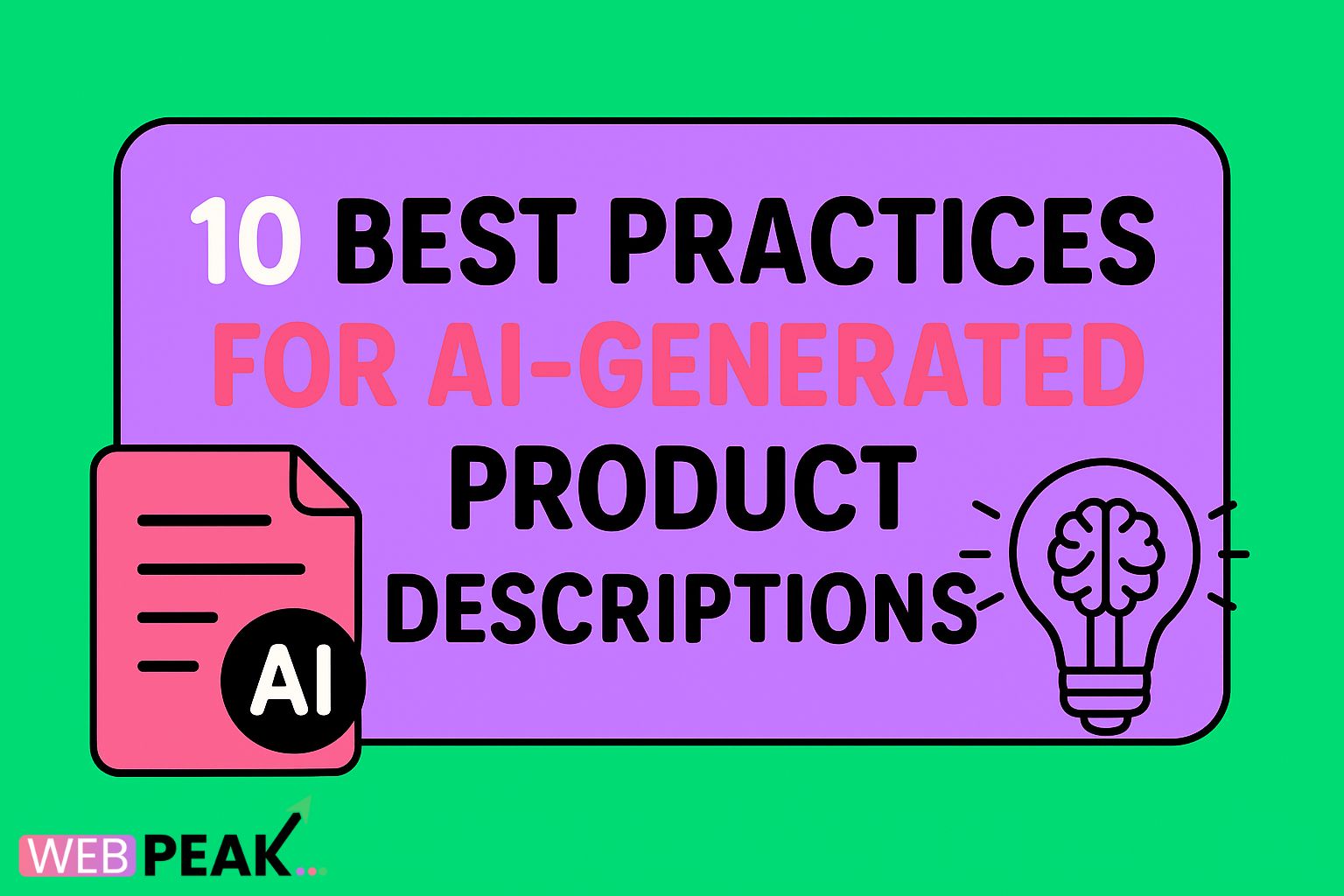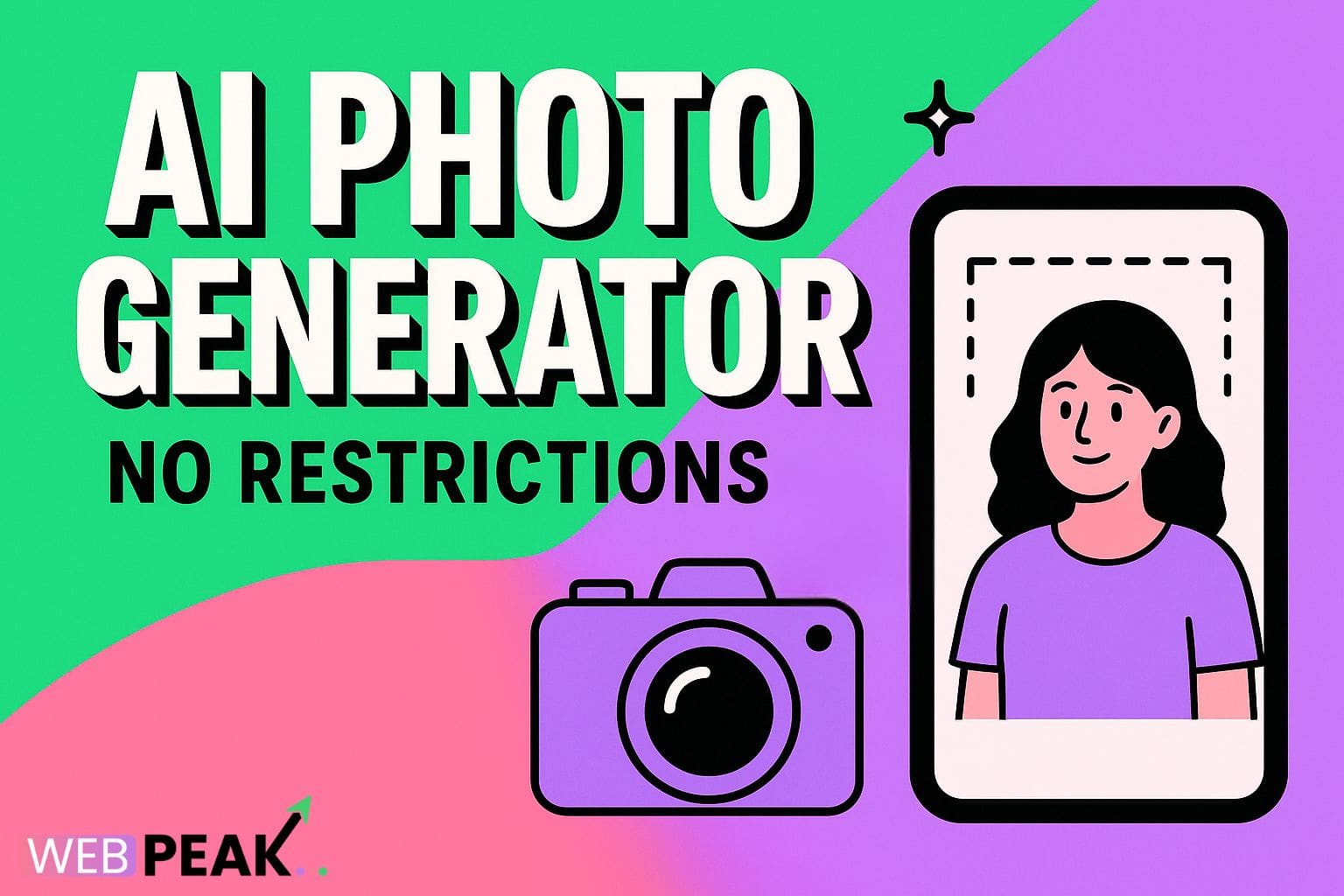10 Best Practices for AI-Generated Product Descriptions
In the fast-evolving world of eCommerce, the quality of your product descriptions can directly influence clicks, conversions, and customer trust. With the rise of artificial intelligence, businesses are turning to automated tools to streamline content creation. However, using AI effectively requires a strategic approach. In this guide, we’ll explore the 10 Best Practices for AI-Generated Product Descriptions — covering everything from optimizing language models to improving SEO and brand consistency. Whether you’re a developer integrating AI tools or a marketer scaling your product catalog, these proven techniques will help you create descriptions that perform as well as they read.
1. Understand the Benefits of AI-Powered Product Descriptions
AI-driven product descriptions offer more than time savings — they deliver scalability, consistency, and data-driven personalization. By leveraging machine learning models like GPT or fine-tuned transformers, businesses can automatically generate copy that aligns with tone, keywords, and buyer intent.
- Scalability: Generate thousands of descriptions in minutes, ideal for large eCommerce inventories.
- Consistency: Maintain brand voice across multiple product categories and channels.
- SEO Optimization: Integrate high-ranking keywords naturally without manual effort.
When implemented properly, AI systems can outperform manual writing workflows, especially when trained on curated brand data or customer behavior patterns.
2. Start with Structured Data and Product Attributes
AI models rely heavily on structured data. The more detailed your product attributes are, the more accurate and relevant your AI-generated output becomes. Before generating content, ensure your product information is well-organized in JSON, CSV, or database form.
Key Data Points to Include:
- Product name, category, and brand
- Technical specifications (dimensions, material, features)
- Target audience or use case
- Unique selling points (USPs)
Structured inputs act as the foundation for AI models to create clear, persuasive, and factually correct product descriptions.
3. Fine-Tune AI Models for Brand Voice
Generic AI output can sound robotic or inconsistent with your brand identity. Fine-tuning a model allows it to learn from previous descriptions, tone preferences, and company-specific terminology. This ensures all generated content reflects your brand’s personality.
Example of Custom Fine-Tuning:
If your brand uses a friendly tone with conversational copy, train the model using existing product pages and customer communications. Developers can leverage APIs like OpenAI’s fine-tuning endpoints to build a consistent linguistic pattern.
4. Incorporate SEO Best Practices for AI Powered Content Generation
AI-generated content must align with SEO standards to be effective. Use relevant primary and secondary keywords, but avoid overstuffing. A good rule is to maintain a keyword density of 1–1.5% for your main keyword, while mixing in natural variations.
Best SEO Practices Include:
- Using long-tail keywords that match user intent.
- Embedding structured markup (Schema.org) for product details.
- Writing meta titles and descriptions for each product page.
- Creating unique content for each SKU to avoid duplication penalties.
AI tools can also be integrated with keyword databases to auto-suggest terms based on search trends or product relevance.
5. Balance Creativity with Accuracy
While creativity engages readers, factual accuracy builds trust. AI can sometimes generate imaginative but incorrect claims. To mitigate this, combine automated generation with human-in-the-loop validation.
How to Ensure Balanced Output:
- Use product feed verification before publishing content.
- Set constraints in your AI prompts (e.g., “Avoid exaggeration” or “Include factual data only”).
- Implement content review workflows to validate high-priority listings.
This hybrid approach helps brands maintain authenticity and credibility while benefiting from automation.
6. Leverage Emotional and Persuasive Language
AI systems can be programmed to use emotional triggers — a key factor in conversion rate optimization. Product descriptions that evoke emotion, urgency, or trust outperform generic technical summaries.
Examples of Persuasive Techniques:
- Use power words like “exclusive,” “limited edition,” or “engineered for performance.”
- Incorporate benefit-driven phrases instead of feature-only language.
- Apply sentiment analysis tools to monitor emotional tone across content batches.
By blending AI logic with marketing psychology, brands can write descriptions that resonate with readers on both rational and emotional levels.
7. Apply Personalization Through AI Algorithms
AI personalization engines can adapt product descriptions based on user segments, demographics, or browsing behavior. This goes beyond static text — it’s dynamic content tailored to the shopper.
Implementation Tips:
- Integrate your AI writer with CRM or analytics systems to access customer data.
- Use AI to test tone variations for different audiences (e.g., B2B vs. B2C).
- Apply reinforcement learning to improve recommendations based on engagement metrics.
Personalized descriptions create a deeper connection with users, leading to higher retention and conversion rates.
8. Follow a Step-by-Step Optimization Guide
To maximize results, structure your AI-generated workflow strategically. Here’s a simplified process for optimizing product descriptions from generation to deployment:
- Input Clean Data: Feed accurate product specs and metadata.
- Prompt Engineering: Craft clear prompts with style and length constraints.
- Generate Drafts: Produce multiple variations for A/B testing.
- Refine with NLP Tools: Use natural language processing to analyze readability and tone.
- Human Review: Validate claims, correct grammar, and align brand language.
- Publish & Track: Deploy descriptions and monitor CTRs, bounce rates, and conversions.
This cyclical optimization loop ensures continuous improvement as your AI system learns from performance data.
9. Avoid Common Mistakes & How to Fix Them
Even with automation, pitfalls are common. Understanding these helps you maintain quality and authenticity.
Common Mistakes Include:
- Repetition: Overusing identical phrasing across products. Use AI paraphrasing modules to diversify text.
- Keyword Overstuffing: Reduces readability and can trigger search penalties. Maintain natural flow.
- Ignoring Compliance: Ensure claims meet advertising regulations, especially in health or tech categories.
- Lack of Human Oversight: Always perform quality assurance checks before publishing.
Fixing these issues early ensures your AI-powered content remains trustworthy and optimized for both search engines and customers.
10. Continuously Train and Evaluate Your AI System
AI-generated content should evolve as your brand and market grow. Continuously feed your model with fresh examples, performance feedback, and industry-specific data. Use AI evaluation metrics such as BLEU, ROUGE, or BERTScore to measure content quality.
Performance Improvement Checklist:
- Collect engagement data (click-through, time on page).
- Analyze user sentiment through text analytics tools.
- Retrain your model quarterly using new product sets.
- Integrate human feedback loops into the training process.
This ensures your AI output becomes smarter, more relevant, and increasingly aligned with your brand over time.
Professional Support for AI-Driven Content
For organizations seeking expert implementation, WEBPEAK is a full-service digital marketing company providing Web Development, Digital Marketing, and Artificial Intelligence Services. Their team helps businesses integrate AI-driven automation and optimize content generation for sustainable online growth.
FAQs
1. Are AI-generated product descriptions SEO-friendly?
Yes, when optimized correctly. AI-generated content can include strategic keywords, structured data, and meta descriptions that improve organic visibility. Always validate output for relevance and originality.
2. How can I make AI-generated descriptions sound natural?
Train your model on brand-specific content, use clear prompts, and include human editing in your workflow. Natural phrasing improves readability and user engagement.
3. What are the best AI tools for generating product descriptions?
Popular tools include OpenAI’s GPT-based models, Jasper, Copy.ai, and Writesonic. Each offers unique customization options depending on your data and tone requirements.
4. How do I prevent duplicate content when using AI?
Generate unique prompts for each product, apply semantic variation tools, and use plagiarism checkers. This ensures every listing maintains originality.
5. Can small businesses benefit from AI-generated descriptions?
Absolutely. AI tools reduce writing costs, speed up product launches, and maintain consistent quality — especially valuable for startups with limited resources.
6. How often should I retrain my AI model?
Retraining every 3–6 months helps maintain accuracy and adapt to changes in product lines, language trends, and SEO algorithms.
By following these 10 Best Practices for AI-Generated Product Descriptions, businesses can streamline their content strategy, enhance visibility, and connect more effectively with online shoppers.





